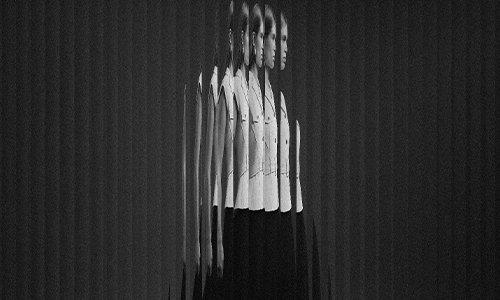As buzz words such as ‘circular fashion’, ‘conscious clothing’ and ‘sustainable practice’ lead the trends, it can be confusing as to where to start to create a more sustainable wardrobe. KM has considered 10 simple steps that will help you to begin or continue your sustainability journey.
1. Inform Yourself
To shop more sustainably, it’s important to make time to educate yourself on what you need to know, as well as what your overall goals are. Is the aim to eventually have a completely sustainably sourced wardrobe, or to be well versed in how to curate a conscious clothing collection? This can be done by considering the fabrications and source of every product before making an informed decision. To create a wardrobe with garments made using more sustainable materials takes time and energy and knowledge, so it’s important to know where you’d like to start to achieve your goals.
2. Avoid These Fabrics
If aiming for a more sustainably sourced wardrobe, there are some common materials that you may choose to avoid. Synthetic fabrics such as polyester and viscose use a lot of chemicals and energy to produce and aren’t ethically crafted, although there are now counterparts available, alongside cottons that aren’t certified or regulated as it uses a lot of water and requires plenty of land to grow. As the fashion industry moves into a more conscious practice, there are pledges to use more sustainably sourced product, soon creating a market with more fabrics to look to than avoid.
3. Look for These Fabrics
Knowing exactly what is in your clothes helps you to make an informed buying decision. Sustainable materials are constantly evolving, and with new products frequently being produced in this ever-changing market, there’s always something different to expand your wardrobe in a more conscious way. Fabrics such as recycled polyester, Tencel and organic cotton are all ready for the future, materials you will see in everyday essentials including shirts and dresses. More premium materials can also be sourced sustainably, including linen and wool. If unsure, always check the fabric composition to know exactly what is included.
Ready for the Future Pieces
4. Share with Friends
Special occasions and events such as weddings or celebrations often call for a show stopping outfit that truly make an impact. Despite this, buying a piece with only one wear in mind can be wasteful, and whilst many designs are now crafted with multifunctionality in mind, they may not be worn as frequently as desired. Instead, creating a clothes swap with your closest friends allows the opportunity to not only widen your wardrobe, but also experiment with new styles, contributing to a circular economy. Reminiscent of getting ready for a night out when younger, make an event of choosing clothes from each other’s wardrobe – by receiving another opinion you may even benefit from rejuvenated inspiration of how to wear one of your forgotten pieces.
5. Capsule your Wardrobe
The mantra of ‘buying less and wearing more’ is one which is echoed time and time again in fashion, however, not only does the creation of a capsule wardrobe create time – with a recommended twenty key timeless pieces that can be interchanged for endless outfitting solutions - but an investment into quality styles also means that they will last for years to come. The best capsule wardrobes are trans seasonal, classic pieces such as a crisp white shirt and the iconic LBD that have versatility at their core.
Capsule Wardrobe Essentials
6. Buy Second Hand
Embrace individuality and create an outfit that is unique to your own personal style by creating a blend of newer and second-hand styles to elevate your wardrobe. Whether becoming a regular customer at your nearest charity shop, visiting auctions or preferring to choose an online, virtual market, secondhand shopping is consistently becoming more and more popular.
7. Donate Your Clothes
Alternatively, if you have clothes that truly no longer have a place, you can donate or even sell these, minimising any opportunity for waste. Whilst charity shops have been overwhelmed with generosity from people, they are forever overwhelmed by any donations. If travel is a limitation, some charities even offer collections – meaning offloading any pieces offer simplicity. Clothing can also be donated to those in need, with social media creating a networking hub which opens up opportunity.
8. Look After Your Clothes
Ensuring that you care for your clothes not only makes them last the test of time, but also means that they stay in a new, quality condition. Get into a good practise for your clothing care by adding simple activities to your routine, such as washing less and washing cooler – which also benefits the environment – these simple considerations do make a difference. The way you store your clothes also is important, generally heavier pieces such as knitwear should be folded in a drawer, rather than hung up, and an investment into good quality hangers also makes a positive impact. Other purchases, such as a lint roller or de-bobbler can help your favourite styles to have a new lease of life and shouldn’t interrupt your busy routine.
9. Repair Clothing
Repairing your clothing shouldn’t always inevitably lead to a trip to the tailor, often there are quick fixes that can be completed from home – without the need for a sewing machine. Instead of disposing of something that may have torn on the seam (particularly an older piece), or in need of a slight adjustment to the length, these can instead be fixed from home – and in less than half an hour. For larger repairs, or if in doubt it may be best to get pieces professionally amended.
10. How Many Times Will You Wear It?
Consideration of frequency of wear not only helps with a buying decision, but also when revamping your wardrobe. On average, the amount of time people are wearing their clothes is getting lower and lower, so if shopping responsibly it’s important to consider longevity of wear. A good exercise is to see if a new investment has the potential to be worn thirty times – if less, really consider whether you’re in need of that purchase.

)

